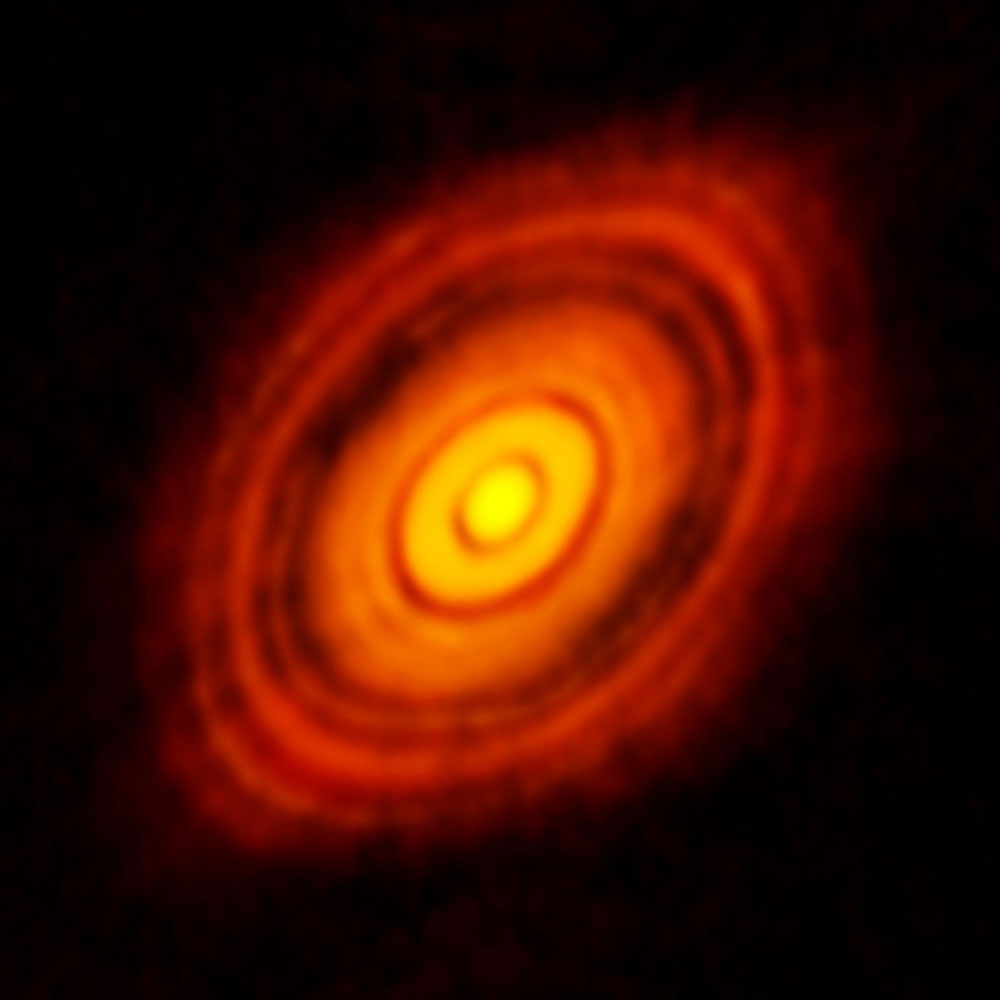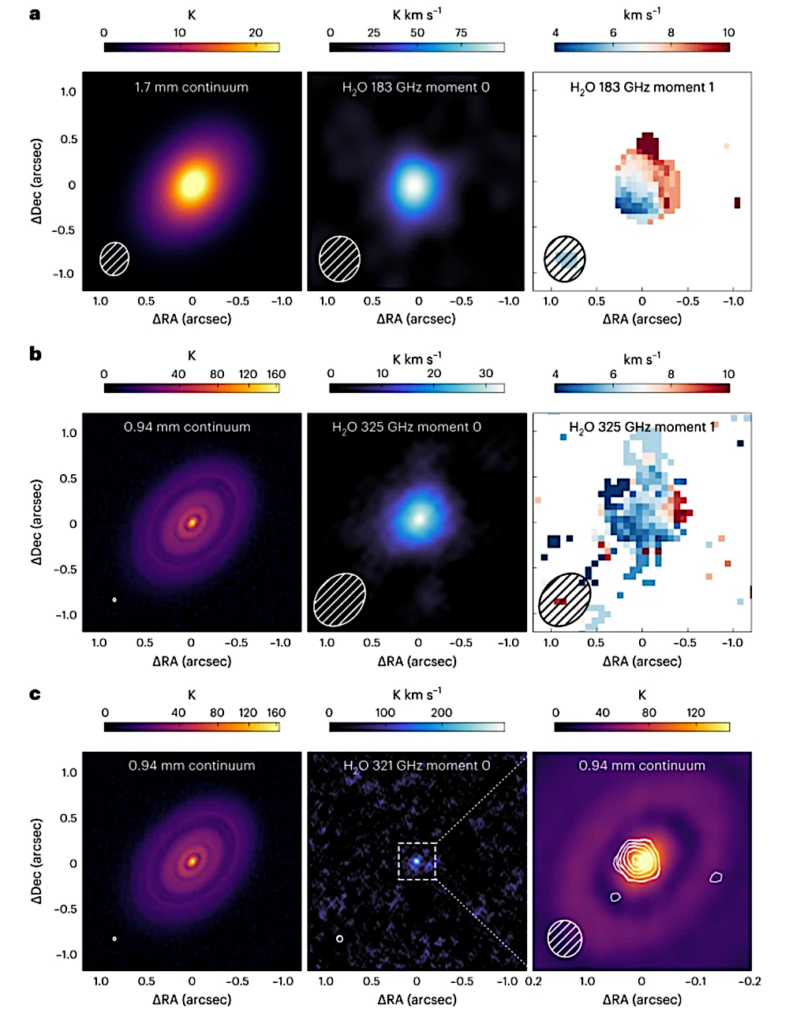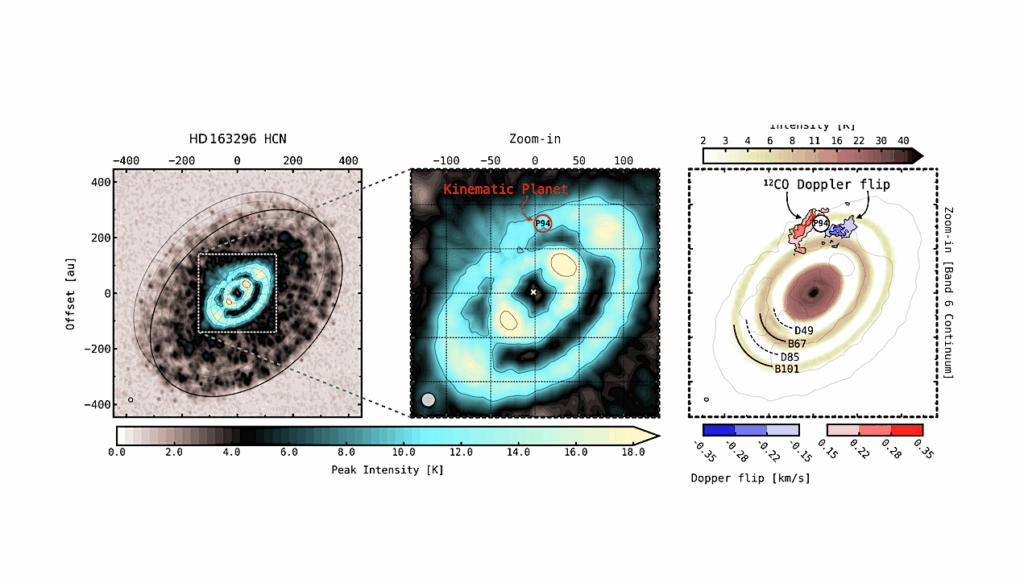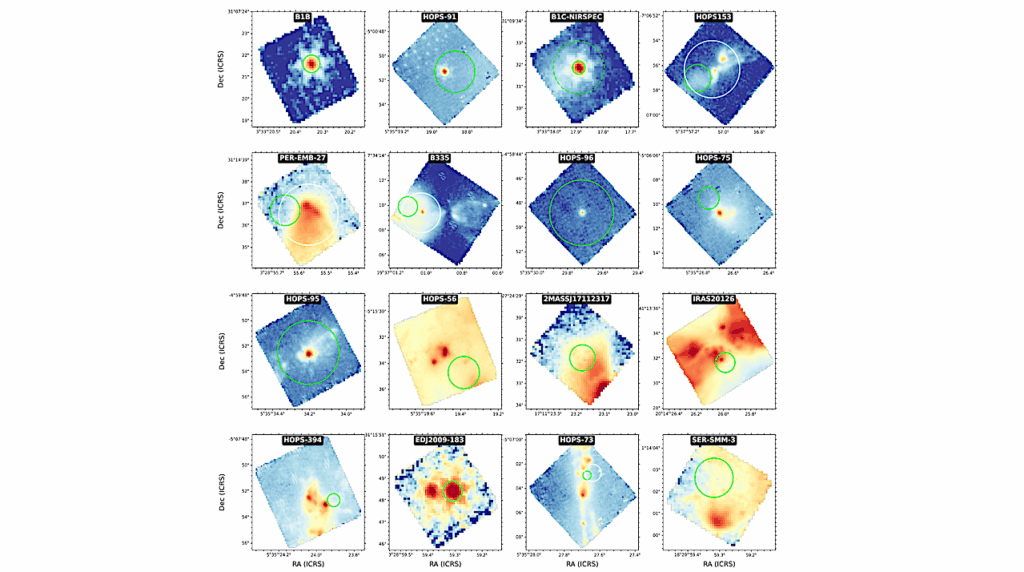A New Link Between Water And Planet Formation

Researchers have found water vapour in the disc around a young star exactly where planets may be forming.
Water is a key ingredient for life on Earth and is also thought to play a significant role in planet formation, yet, until now, astronomers have never been able to map how water is distributed in a stable, cool disc — the type of disc that offers the most favourable conditions for planets to form around stars.
For the first time, astronomers have weighed the amount of water vapour around a typical planet-forming star.
The new findings were made possible thanks to the Atacama Large Millimeter/submillimeter Array (ALMA) – a collection of telescopes in the Chilean Atacama Desert. The University of Manchester’s Jodrell Bank Centre for Astrophysics hosts the UK ALMA Regional Centre Node (UK ARC) which supports UK astronomers using ALMA.

This is the sharpest image ever taken by ALMA — sharper than is routinely achieved in visible light with the NASA/ESA Hubble Space Telescope. It shows the protoplanetary disc surrounding the young star HL Tauri. These new ALMA observations reveal substructures within the disc that have never been seen before and even show the possible positions of planets forming in the dark patches within the system. Credit: ALMA (ESO/NAOJ/NRAO)
Dr Anita Richards, Senior Visiting Fellow at The University of Manchester and previously a member of the UK ARC, played a key role in the group verifying the operation of the ‘Band 5’ receiver system, which was essential for ALMA to produce the detailed image of the water.
Dr Richards said: “Directly measuring the amount of water vapour where planets are forming takes us a step closer to understanding how easy it could be to make worlds with oceans – how much water is attached to the agglomerating rocks, or is it mostly added later to an almost-fully-formed planet? This sort of observation needs the driest possible conditions and could only be made in such detail using the ALMA array in Chile.”
The observations, published today in the journal Nature Astronomy, reveal at least three times as much water as in all of Earth’s oceans in the inner disc of the young Sun-like star HL Tauri, located 450 light-years away from Earth in the constellation Taurus.

Astronomers have found water vapour in a disc around a young star exactly where planets may be forming. In this image, the new observations from the Atacama Large Millimeter/submillimeter Array (ALMA), in which ESO is a partner, show the water vapour in shades of blue. Near the centre of the disc, where the young star lives, the environment is hotter and the gas brighter. The red-hued rings are previous ALMA observations showing the distribution of dust around the star. Credit: ALMA (ESO/NAOJ/NRAO)/S. Facchini et al.
Stefano Facchini, an astronomer at the University of Milan, Italy, who led the study, said: “I had never imagined that we could capture an image of oceans of water vapour in the same region where a planet is likely forming.”
Co-author Leonardo Testi, an astronomer at the University of Bologna, Italy, added: “It is truly remarkable that we can not only detect but also capture detailed images and spatially resolve water vapour at a distance of 450 light-years from us.”
These observations with ALMA, which show details as small as a human hair at a kilometre distance, allow astronomers to determine the distribution of water in different regions of the disc.
A significant amount of water was found in the region where a known gap in the HL Tauri disc exists – a place where a planet could potentially be forming. Radial gaps are carved out in gas- and dust-rich discs by orbiting young planet-like bodies as they gather up material and grow. This suggests that this water vapour could affect the chemical composition of planets forming in those regions.
But, observing water with a ground-based telescope is no mean feat as the abundant water vapour in Earth’s atmosphere degrades the astronomical signals.
ALMA, operated by European Southern Observatory (ESO), together with its international partners, sits at about 5000 metres elevation and is built in a high and dry environment specifically to minimise this degradation, providing exceptional observing conditions. To date, ALMA is the only facility able to map the distribution of water in a cool planet-forming disc.
The dust grains that make up a disc are the seeds of planet formation, colliding and clumping into ever larger bodies orbiting the star. Astronomers believe that where it is cold enough for water to freeze onto dust particles, things stick together more efficiently — an ideal spot for planet formation.
Members of the UK ARC are contributing to a major upgrade of ALMA, which with ESO’s Extremely Large Telescope (ELT) also coming online within the decade, will provide even clearer views of planet formation and the role water plays in it. In particular METIS, the Mid-infrared ELT Imager and Spectrograph, will give astronomers unrivalled views of the inner regions of planet-forming discs, where planets like Earth form.

a, Left, 1.7 mm continuum image of HL Tau. Centre, integrated intensity map of the 183 GHz water line. Right, intensity-weighted velocity map of the 183 GHz water line after 4σ clipping on individual channels, where disk rotation is clearly detected. b, Same as a, for the 0.94 mm continuum and the 325 GHz water line. The intensity-weighted velocity map in this case is computed after 3σ clipping. c, left and centre, same as a, for the 0.94 mm continuum and the 321 GHz water line. No moment 1 map is shown due to low SNR. Right, zoom-in of continuum intensity, with [4,5,6,7,8]σ contours of the 321 GHz line moment 0 map, with σ = 13.3 mJy beam−1 km s−1. The r.m.s. associated with the the integrated intensity maps of the 183 and 325 GHz lines are, respectively, 28.2 and 46.3 mJy beam−1 km s−1. Brightness intensity (K). Integrated intensity (K km s−1). Intensity weighted velocity along the line of sight (km s−1). Distance from the phase center in Right Ascension (Delta RA). Distance from the same center in Declination (Delta Dec).
Resolved ALMA observations of water in the inner astronomical units of the HL Tau disk, Nature Astronomy (open access)
Astrobiology,








